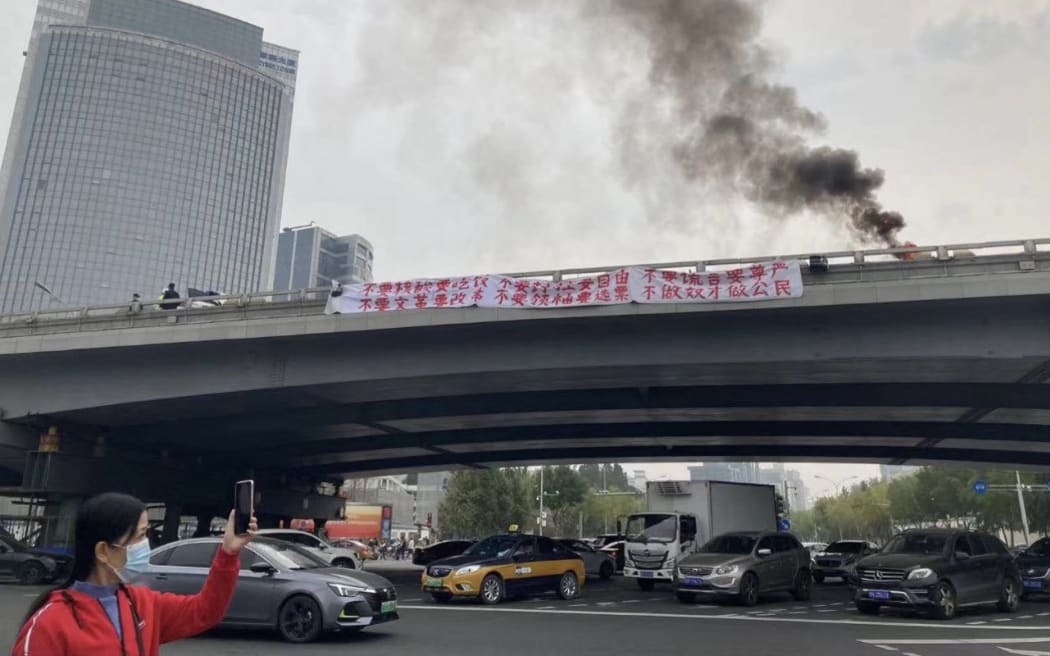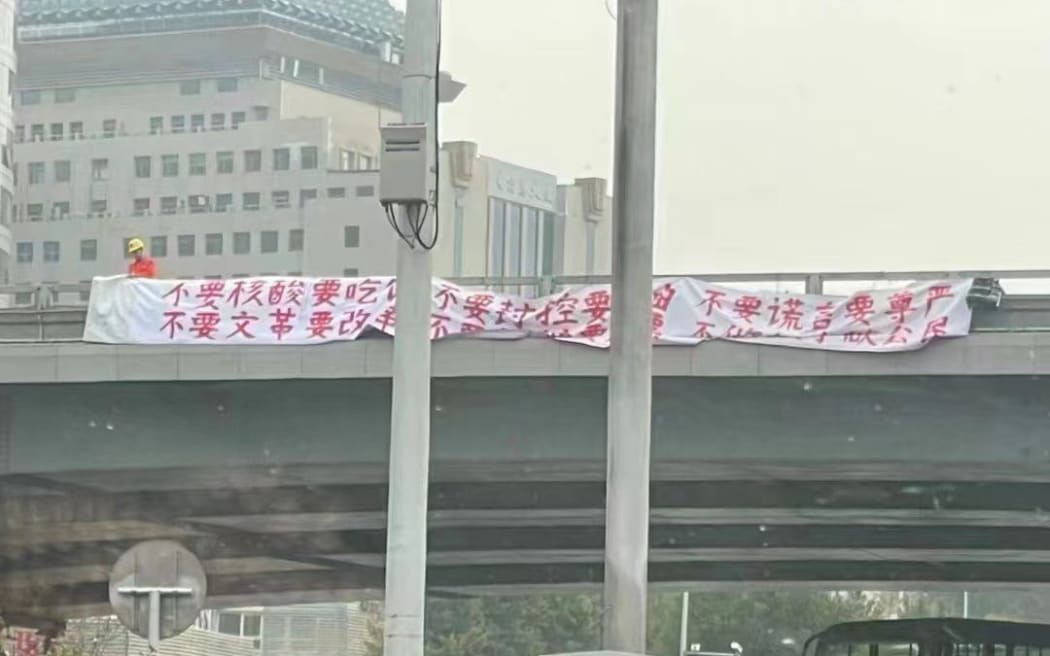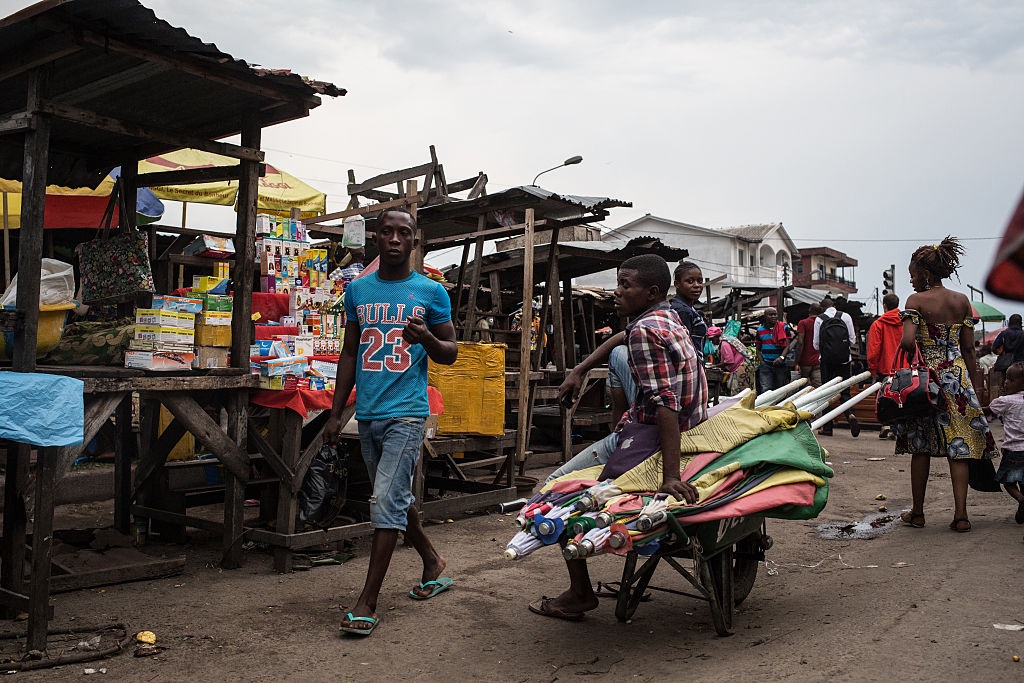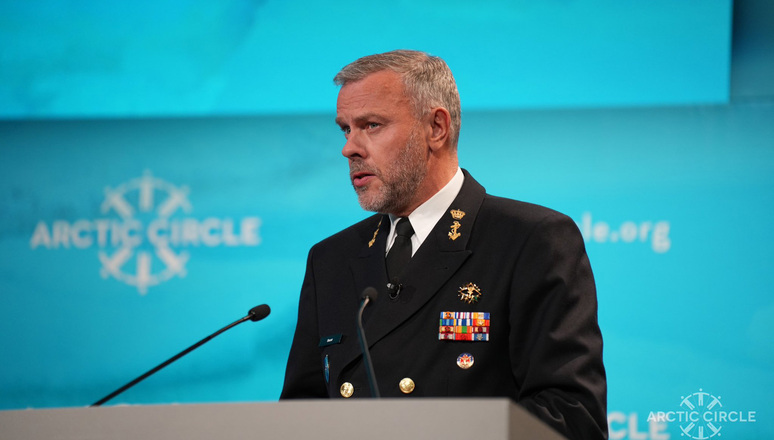October 16, 2022
THE ASSOCIATED PRESS

Protesters calling for the resignation of Haitian Prime Minister Ariel Henry run after police fired tear gas to disperse them in the Delmas area of Port-au-Prince, Haiti, Monday, Oct. 10, 2022.Odelyn Joseph/AP
SAN JUAN, Puerto Rico — The U.S. and Canada sent armored vehicles and other supplies to Haiti on Saturday to help police fight a powerful gang amid a pending request from the Haitian government for the immediate deployment of foreign troops.
A U.S. State Department statement said the equipment was bought by Haiti's government, but it did not provide further details on the supplies flown on military aircraft to the capital of Port-au-Prince.
A spokesman for the U.S. military's Southern Command said he could not provide further details on the supplies sent, though he added it was a joint operation involving the U.S. Air Force and Royal Canadian Air Force.
"This equipment will assist (Haiti's National Police) in their fight against criminal actors who are fomenting violence and disrupting the flow of critically-needed humanitarian assistance, hindering efforts to halt the spread of cholera," the State Department said.
Sponsor Message
The history of U.S. intervention in Haiti is stopping U.S. officials from intervening
The Pan American Health Organization said there are more than 560 suspected cases of cholera, some 300 hospitalizations and at least 35 deaths, with experts warning the numbers are likely much higher than what i's being reported.
The equipment arrived more than a month after one of Haiti's most powerful gangs surrounded a fuel terminal and demanded the resignation of Prime Minister Ariel Henry. Demonstrators also have blocked roads in major cities to protest a sharp rise in fuel prices after Henry announced in early September that his administration could no longer afford to subsidize fuel.
Since then, gas stations have closed, hospitals have cut back on services and banks and grocery stores open on a limited basis as fuel, water and other supplies dwindle across Haiti.
The owners of the fuel terminal announced Saturday that armed men had attacked their installations for a second time and fled with more than 28,000 gallons of petroleum products after overpowering surveillance and emergency personnel at the facility.
It was the second time this week that armed men broke into the terminal, which stores more than 10 million gallons of gasoline and diesel and more than 800,000 gallons of kerosene.
Medical teams raise alarms as deadly cholera outbreak grows amid violence in Haiti
Most concerning, advocates say, is spread of cholera in
Haiti’s overcrowded prisons
The death toll is mounting in a growing cholera outbreak in Haiti, all while the beleaguered Caribbean country grapples with gang violence, crumbling infrastructure, and widespread social and political unrest.
The waterborne bacterial infection — which can lead to the rapid onset of severe diarrhea and dehydration — has caused at least 35 official deaths, with more than 600 suspected or confirmed cases in the area surrounding the country's capital, Port-au-Prince, according to the latest figures from the Pan American Health Organization (PAHO).
On Wednesday, Dr. Carissa F. Etienne, director of the PAHO, said cases are likely higher than the official figures, given escalating street violence and criminal activity, which "complicate efforts" to provide humanitarian assistance and respond to the outbreak.
Most concerning, advocates say, is the spread of cholera in Haiti's overcrowded prison system.
Non-profit organization Health through Walls, which provides medical care to prisoners, shared figures with The Associated Press that suggest there have been at least 21 deaths and 147 hospitalizations since early October within the National Penitentiary in Port-au-Prince — Haiti's largest prison with more than 4,000 inmates.
PAHO figures suggest there have been more than 200 suspected cases in total linked to the prison.
A former inmate, who is now living in a community on Haiti's west coast, told CBC News that a cholera outbreak isn't surprising given the overcrowded conditions within the penitentiary and the limited medical staff on site.
"It's the most unsanitary conditions you can think of. There's no running water," he said. "The toilet is practically a hole in the ground that runs off into the outside — there's no sewage system."
The man, who is still in touch with some current inmates, said they are reporting multiple deaths each day and have shared stories of being stuck with corpses of those who have died of cholera for long stretches of time, even overnight.
"It's pretty infectious, and it's going to spread," he said.
CBC News has verified the man's identity and granted him anonymity due to his concerns about the high risk of violence in Haiti.
Transmission linked to lack of access to clean water, sanitation
Cholera cases are exceedingly rare in Canada and, as of the last few decades, have only been linked to travel abroad.
Transmission of the bacteria causing this potentially deadly illness is closely linked to inadequate access to clean water and sanitation facilities, and is often exacerbated during times of humanitarian crisis, according to the World Health Organization (WHO).
In Haiti, demonstrators began blocking roads in multiple cities to protest rising fuel prices after Prime Minister Ariel Henry announced in early September that his administration could no longer afford to subsidize fuel.
During a media briefing on Wednesday, WHO director general Tedros Adhanom Ghebreyesus stressed that the situation makes it difficult to collect patient samples and delays laboratory confirmation of cases and deaths.
"In addition, fuel shortages are making it harder for health workers to get to work, causing health facilities to close and disrupting access to health services for people who live in some of the most deprived communities," he said.
If Haiti's cholera outbreak continues to grow, it's unlikely it would spread beyond the country's borders given the usual transmission route through contaminated water and food, noted infectious diseases specialist Dr. Srinivas Murthy, a clinical associate professor at the University of British Columbia.
However, should case counts explode while the country is struggling to provide proper medical care, it would result in a high number of deaths, he said.
"At this point, there's people calling for the release of prisoners in that prison where it's spreading like wildfire," Murthy said. "That's a reasonable thing to do."
Health Through Walls, the non-profit providing medical care in Haiti, is among the groups calling on the country to release certain inmates — including those who are critically ill, malnourished or have served their time but have not gone to trial.
A recent United Nations report on Haiti's prison system, based on visits to 12 detention centres in 2021 and interviews with more than 220 people, suggests the facilities are bursting at the seams — with more than 80 per cent of inmates facing "excessive use of pre-trial detention" and who have not yet been convicted of a crime.
"In most of the detention centres, inmates do not have access to adequate medical care and medicines, leaving them at risk should there be a medical emergency, and reliant on help from family members," the report continued.
Haiti first endured cholera outbreak in 2010
Haiti first endured a cholera outbreak in 2010 — the worst in recent global history — which led to roughly 10,000 deaths and more than 820,000 cases.
The devastating spread of cholera in the country followed a catastrophic earthquake and the arrival of international assistance, with a later study suggesting that aid workers carried the bacteria in and sparked the outbreak.
Case counts tapered off, and for years Haiti was thought to be close to cholera-free.
But Haiti's ambassador to Canada, Weibert Arthus, told CBC News that given the ongoing social unrest and infrastructure challenges the country faces, there was bound to be another public health crisis.
"If it's not cholera, it will be malaria, it will be something," he said.
Arthus said Canadian and Haitian officials have been in touch, discussing ways for Canada to support Haiti. What's needed going forward, he added, are international investments to support development for the long term.
"They need to help us build the infrastructure for the country," he said.

















